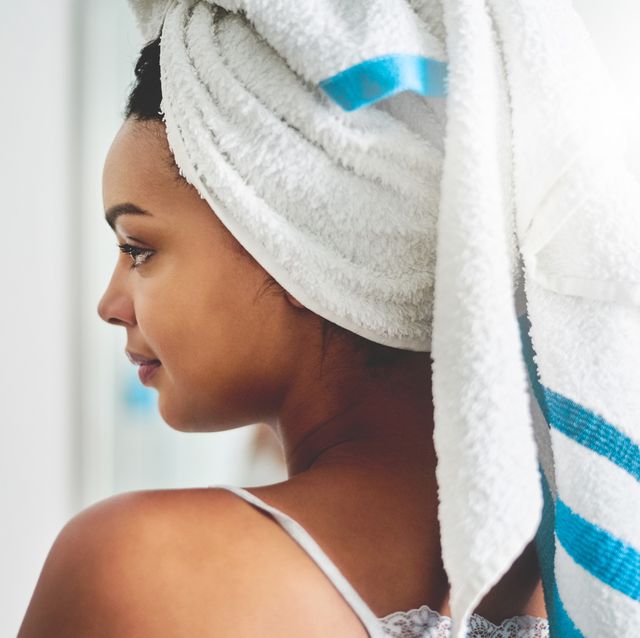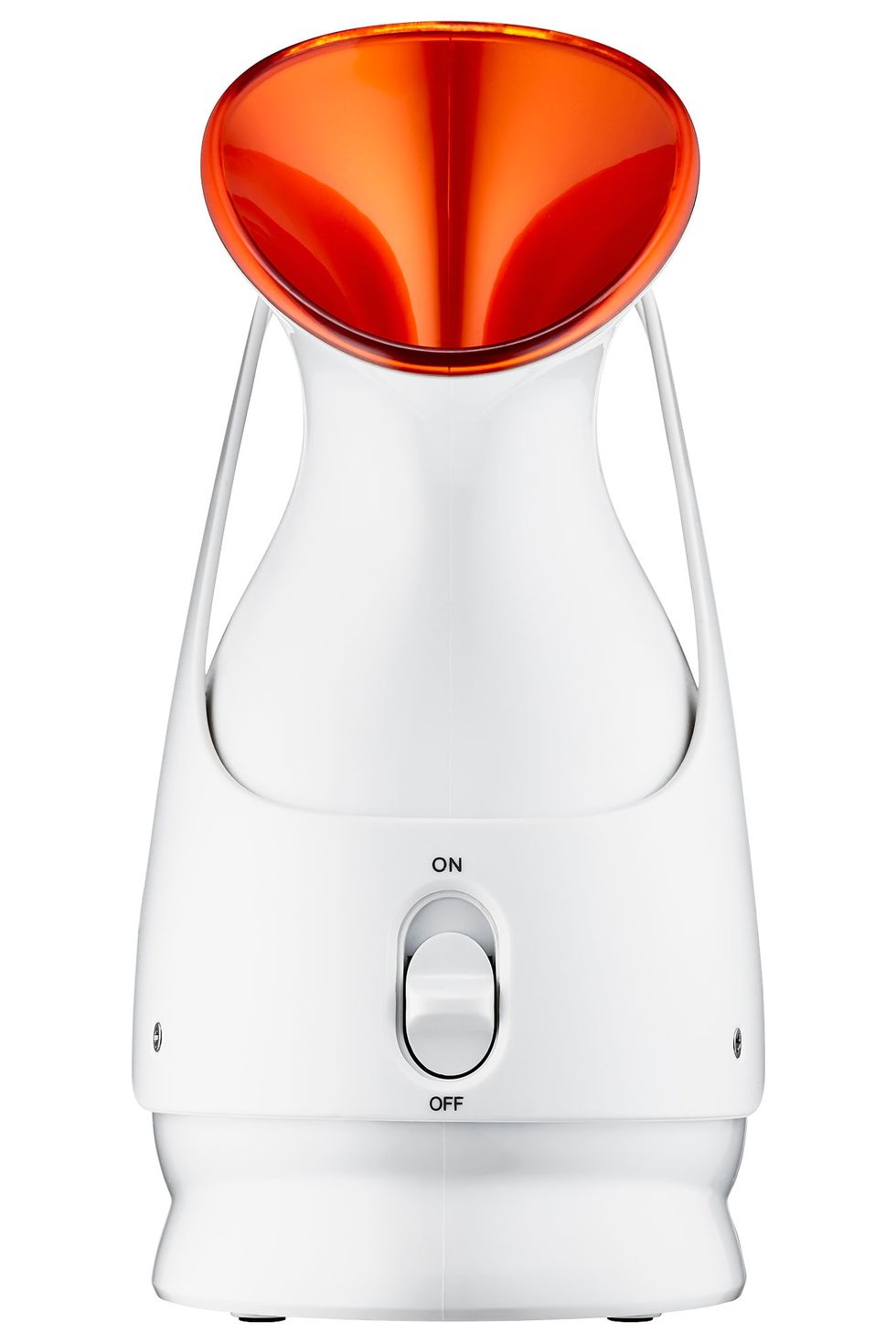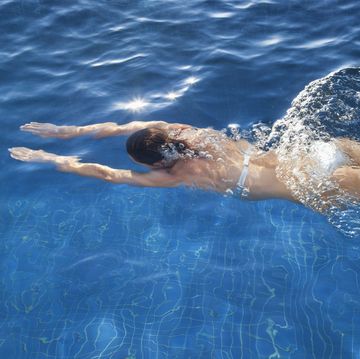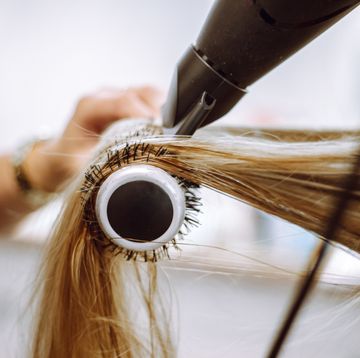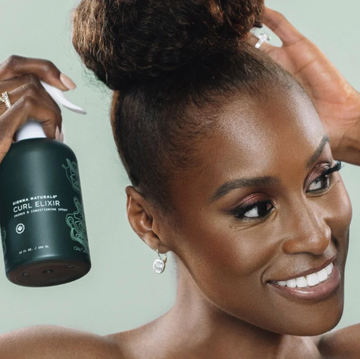It's common knowledge that stylists perform magic on hair while your head's happily tilted back in their bowl. But one in-salon trick known as hair steaming is actually one of the easiest to do all on your own at home—or, better yet, in your very own shower. To get a pro take on hair steaming's benefits, how to DIY the spa-worthy treatment, and which at-home steamers are worth your money, we got the scoop from Ina Toregano, natural hair stylist at Ina Styled studio in Minnesota's Twin Cities.
What is hair steaming?
For once, this is a beauty treatment that does exactly what it says—quite literally applying steam to your hair. "Hair steaming is pretty much the sister to deep conditioning your hair, I would say. So, they have a lot of the same really good benefits, but with a heated dryer you just have more of that dry heat factor," explains Toregano. On the flip side, steamers use, well, steam. "And because whenever you have heat, the hair cuticle opens, and the moisture—whatever hair mask or conditioner you're using—is able to penetrate a lot deeper than you just putting deep conditioner on the hair, and it just kind of sitting on the outside."
What are the benefits of hair steaming for your hair—and scalp?
Since hair steaming quite literally just involves using moist heat to activate the hair follicle and allow for deeper product penetration, there's a treasure trove of benefits to be had—and no reason not to try it out. "Any hair type, any hair texture can do it," says Toregano. "So from the person with fine hair to the person with really thick, textured, coily hair, it's just really going to open up that cuticle so that the moisture can get in."
Coincidentally, hair steaming is an excellent aid for dandruff and scalp-related treatments, as well as a way to increase blood flow at your scalp. "If you deal with dandruff, if you deal with really dry scalp, it opens it up to let that steam get deep into there, as well as like the peppermint or the tea tree or whatever you put on it to help aid in the process," says Toregano. "All those good nutrients and the product that you put on can really get in there and help aid in nourishing the scalp."
How do you know if you should be steaming your hair?
As mentioned before, any hair type can reap hair steaming's multitude of benefits, though it's particularly useful for those with naturally dry hair types. "I think for our textured and coily and curly girls the benefits are heightened a little bit, just because curls are a lot drier. And so with that added steam, the moisturizers that you've put on, they really, really, really plump those curls up and rejuvenate those curls," explains the hair stylist. "So a lot of ladies that are doing the Curly Girl Method, they love hair steaming."
What type of steamer should you use on your hair?
Sold on steaming, but can't get in for a session with your stylist? You can buy an at-home steamer to use on your hair, though Toregano warns against hooded steamers (which can drip mega-hot water on your scalp) as well as using garment steamers on your hair (for obvious reasons). Instead, the stylist recommends investing in a higher-quality facial steamer—such as this angled skin steamer from Amazon.
What products should you use while steaming your hair?
"Use a deep treatment mask or a deep conditioner—not just a regular conditioner, not a leave-in conditioner. Something that's a deep conditioner or a mask because it'll do different things for the hair cuticle as well," says Toregano. Remember: Apply the conditioning haircare before you steam, not after, since the wet heat is actively opening up your hair and helping whichever moisturizer you applied to absorb.
Can you DIY hair steaming?
You actually can successfully—and safely!—DIY a steam, though it won't be quite as impactful as a professional treatment or steamer. Toregano says you can jump into the shower once you've applied your go-to deep conditioner, turn up the hot water, and create an in-bathroom sauna. "Obviously it's a little bit more mild, because the steam isn't going to hit the hair the same way but it still opens up the cuticle," she adds.
Or, there's the towel method: "I tell people to put a wet towel in the dryer, so that it gets really, really steamed and hot, and then wrap that around their hair," explains Toregano. "So the purpose is to really just get it hot and get that same element to open up the hair cuticle." Toregano prefers steaming clients' hair for 20 minutes, though 10 or 15-minute "quick steams" are still beneficial—so, the next time you have a few minutes to spare, hot water, and a towel, you know what to do.
